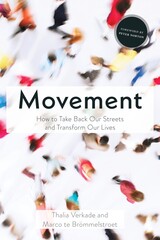2 books about Tramp

The Tramp in America
Tim Cresswell
Reaktion Books, 2001
This book provides the first account of the invention of the tramp as a social type in the United States between the 1870s and the 1930s. Tim Cresswell considers the ways in which the tramp was imagined and described and how, by World War II, it was being reclassified and rendered invisible. He describes the "tramp scare" of the late nineteenth century and explores the assumption that tramps were invariably male and therefore a threat to women. Cresswell also examines tramps as comic figures and looks at the work of prominent American photographers which signaled a sympathetic portrayal of this often-despised group. Perhaps most significantly, The Tramp in America calls into question the common assumption that mobility played a central role in the production of American identity.
“This is an effective, and sometimes touching, account of how a social phenomenon was created, classified and reclassified. The quality of the writing, the excellent illustrations and the high production standards give this reasonably-priced hardback a chance of appealing to a general audience . . . an important contribution to American studies, providing new perspectives on the significance of mobility and rootlessness at an important time in the development of the nation. Cresswell successfully illuminates the history of a disadvantaged and marginal group, while providing a lens by which to focus on the thinking and practices of the mainstream culture with which they dealt. As such, this book represents a considerable achievement.”—Cultural Geographies
“An important book. Cresswell has made an important contribution to a homelessness literature still lacking a more sophisticated theoretical edge. Clearly written, beautifully illustrated and with a strong argument throughout, the book deserves to be widely read by students and practitioners alike.”—Progress in Human Geography
“This is an effective, and sometimes touching, account of how a social phenomenon was created, classified and reclassified. The quality of the writing, the excellent illustrations and the high production standards give this reasonably-priced hardback a chance of appealing to a general audience . . . an important contribution to American studies, providing new perspectives on the significance of mobility and rootlessness at an important time in the development of the nation. Cresswell successfully illuminates the history of a disadvantaged and marginal group, while providing a lens by which to focus on the thinking and practices of the mainstream culture with which they dealt. As such, this book represents a considerable achievement.”—Cultural Geographies
“An important book. Cresswell has made an important contribution to a homelessness literature still lacking a more sophisticated theoretical edge. Clearly written, beautifully illustrated and with a strong argument throughout, the book deserves to be widely read by students and practitioners alike.”—Progress in Human Geography
[more]

Tramp
Or the Art of Living a Wild and Poetic Life
Tomas Espedal
Seagull Books, 2010
A lyrical travelogue charting Tomas Espedal’s journeys to and ruminations around the world, from his native Norway to Istanbul and beyond.
“Why travel?” asks Tomas Espedal in Tramp, “Why not just stay at home, in your room, in your house, in the place you like better than any other, your own place. The familiar house, the requisite rooms in which we have gathered the things we need, a good bed, a desk, a whole pile of books. The windows giving on to the sea and the garden with its apple trees and holly hedge, a beautiful garden, growing wild.”
The first step in any trip or journey is always a footstep—the brave or curious act of putting one foot in front of the other and stepping out of the house onto the sidewalk below. Here, Espedal contemplates what this ambulatory mode of travel has meant for great artists and thinkers, including Rousseau, Kant, Hazlitt, Thoreau, Rimbaud, Whitman, Giacometti, and Robert Louis Stevenson. In the process, he confronts his own inability to write from a fixed abode and his refusal to banish the temptation to become permanently itinerant.
Lyrical and rebellious, immediate and sensuous, Tramp conveys Espedal’s own need to explore on foot—in places as diverse as Wales and Turkey—and offers us the excitement and adventure of being a companion on his fascinating and intriguing travels.
“Why travel?” asks Tomas Espedal in Tramp, “Why not just stay at home, in your room, in your house, in the place you like better than any other, your own place. The familiar house, the requisite rooms in which we have gathered the things we need, a good bed, a desk, a whole pile of books. The windows giving on to the sea and the garden with its apple trees and holly hedge, a beautiful garden, growing wild.”
The first step in any trip or journey is always a footstep—the brave or curious act of putting one foot in front of the other and stepping out of the house onto the sidewalk below. Here, Espedal contemplates what this ambulatory mode of travel has meant for great artists and thinkers, including Rousseau, Kant, Hazlitt, Thoreau, Rimbaud, Whitman, Giacometti, and Robert Louis Stevenson. In the process, he confronts his own inability to write from a fixed abode and his refusal to banish the temptation to become permanently itinerant.
Lyrical and rebellious, immediate and sensuous, Tramp conveys Espedal’s own need to explore on foot—in places as diverse as Wales and Turkey—and offers us the excitement and adventure of being a companion on his fascinating and intriguing travels.
[more]
READERS
Browse our collection.
PUBLISHERS
See BiblioVault's publisher services.
STUDENT SERVICES
Files for college accessibility offices.
UChicago Accessibility Resources
home | accessibility | search | about | contact us
BiblioVault ® 2001 - 2024
The University of Chicago Press









